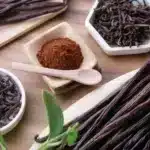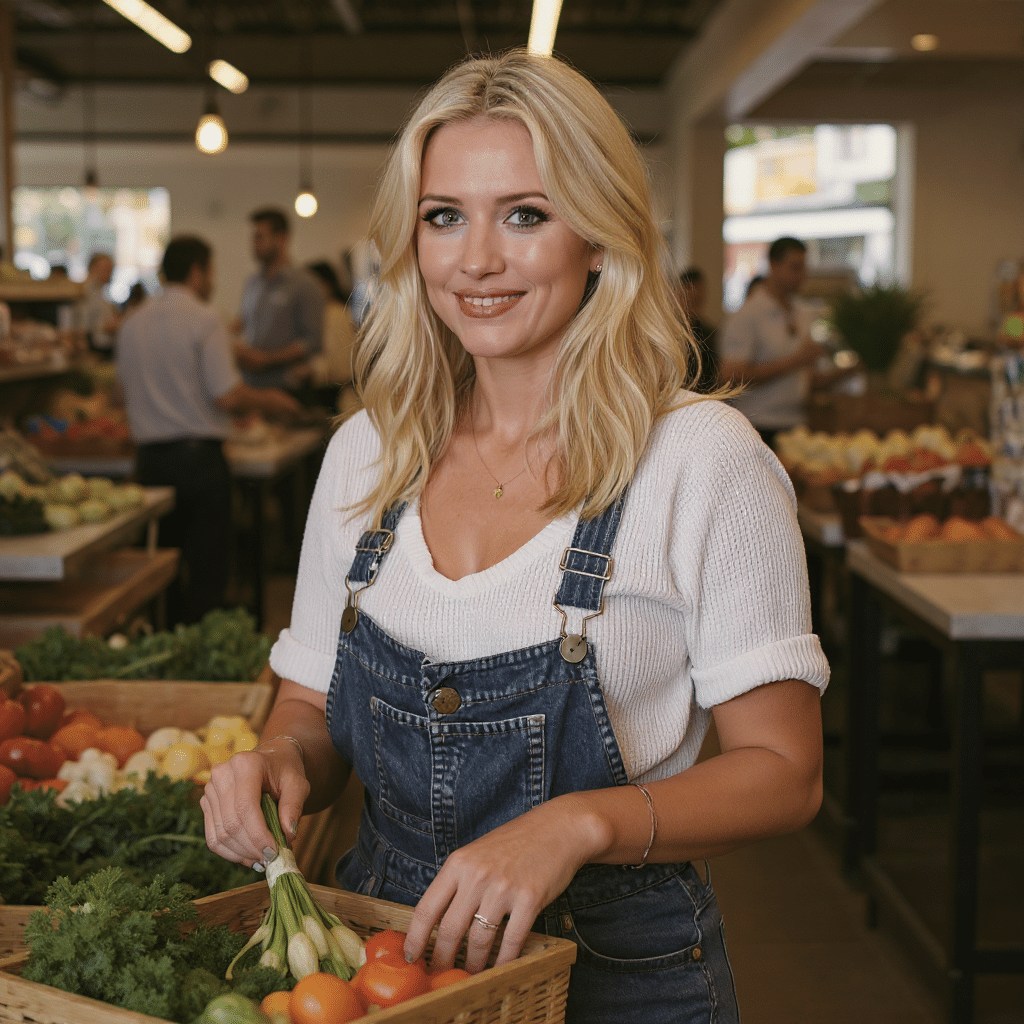So, you know that kinda frustrating feeling when a recipe calls for “real vanilla” and you pause… and honestly have zero clue what exactly that means? It’s not just you! Guide to the different types of vanilla feels like a minefield. I remember running into this dynamite vanilla post when I was trying to make my simple chocolate chip cookies taste a little fancier (hot tip: a drop of Mexican vanilla changed my life). If you ever wondered which vanilla works best for, let’s say, a classic vanilla pound cake or homemade ice cream, you’re legit not alone. For a deeper dive, check out this detailed piece about the different types of vanilla for baking. Now, let’s roll up our sleeves and solve this vanilla mystery together!

Different Types of Vanilla
Oddly enough, there isn’t just one kind of vanilla. That’s why things get confusing. The three heavy hitters? Madagascar, Mexican, and Tahitian. Each has a wildly unique vibe.
Madagascar vanilla is what you probably imagine if you close your eyes and think about vanilla. Super creamy, cozy, a little bit sweet, and honestly… it just smells like home. Great for everything—cookie dough, custards, you name it.
Mexican vanilla packs a bolder punch. Sometimes I’d call it spicy? It’s kinda woodsy and rich. Great for big flavors, like cinnamon-y cakes or bold hot chocolate.
Then there’s Tahitian vanilla. Softer, flowery, maybe even delicate. It’s perfect in fruity things—like a summer peach tart or a pretty little panna cotta.
There’s also Ugandan and even Indian vanilla—each with minor twists in flavor. Wild, right? But honestly, you can taste the tiny differences if you just try a spoonful side by side.

How is vanilla grown?
Okay, here’s a fun fact: vanilla actually starts off as a flower. (I thought it fell from the sky like fairy dust—clearly, nope.) The plant is sorta like these green vines climbing in humid greenhouses or tropical forests.
It’s not a quick thing. Growing vanilla takes years. The flowers are super particular and only open for like twenty-four hours. They’ve gotta be pollinated by hand—yes, human hands! That’s a big part of why real vanilla is so pricy in stores.
Farmers have to babysit vanilla pods for months as they get bigger, all green and bumpy. Then they pick them at just the right moment, once they turn yellow and a little wrinkly.

How are vanilla beans cured?
Curing is kinda like magic. After harvesting, those green beans do NOT smell like much. So, here’s what they do: they blanch them in hot water (just for seconds), then pile them up in cloth and let them sweat. Sometimes for months.
After that, they dry the beans in the sun during the day and sweat ’em in blankets at night. This transforms the plant-y pods into that deep, woody, rich-smelling vanilla you love. It’s a weirdly delicate process. One mistake, and you’ve just got some mushy, weird green beans on your hands.
“I tried using supermarket ‘vanilla’ once and my sugar cookies tasted like plastic. Now I spend a little more for real vanilla and wow, totally different dessert!” — Jenna P.
Vanilla Extract vs. Imitation Vanilla
Can I vent? Vanilla extract is expensive—but in my kitchen, it’s non-negotiable! Real extract usually means soaking those cured vanilla beans in alcohol and water. The flavor is deep, warm, and somehow feels a bit special.
Imitation vanilla? It’s usually made with synthetic vanillin. (Not even from vanilla beans. Woof.) It works for basic stuff, but… it’s just not the same. I’ve tried both in pancakes and honestly, you can tell which is which.
I get it—sometimes you’re on a budget. But for anything special, use the real deal. Trust me, your taste buds will say “thanks.”
Recommended Vanilla Recipes
If you want some totally foolproof recipes to see the difference for yourself, try these:
- Vanilla Bean Ice Cream: Pure vanilla, almost creamy clouds.
- Classic Sugar Cookies: Test out two types of vanilla. You’ll taste it!
- French Toast: A dash of Mexican vanilla levels up this brunch favorite.
- Homemade Custard: Try Tahitian vanilla for a floral surprise.
Wanna get creative? Add a split vanilla bean to your coffee grounds. It’s breakfast luxury.
Guide to the different types of vanilla with pictures
This might help — here’s a little snapshot table so you can spot the differences when you’re out shopping:
| Type | Origin | Flavor | What It’s Best For |
|---|---|---|---|
| Madagascar Bourbon | Madagascar | Creamy, classic, bold | Baking, custard, cakes |
| Mexican | Mexico | Woody, spicy, deep | Hot chocolate, cookies, bold desserts |
| Tahitian | Tahiti | Floral, delicate, fruity | Fruit desserts, panna cotta |
| Ugandan | Uganda | Chocolaty, earthy | Brownies, chocolate sauces |
Types of vanilla flavors
Vanilla isn’t just vanilla. Sometimes, even the mood of the bean changes how it tastes. Weather, soil, and even how long it’s sunbathing matters!
For instance, you get bold strong flavor in Madagascar, but Tahiti is like a flower garden. There’s also “double strength” vanilla for when you want to go totally overboard (I respect it).
Some vanilla is straight-up sweet, some tastes smokier or has a hint of fruit. Smell them side by side if you’re feeling nerdy. It’s fun, promise.
Guide to the different types of vanilla and their uses
If you’re like me and keep forgetting which is for what: Madagascar is a go-to all-purpose for almost anything. Mexican fits cinnamon and chocolate. Tahitian is for anything fruity or floral.
Keep a small bottle of at least two types if you bake a lot. Y’know, just in case you want to “wow” someone or experiment for yourself.
Don’t go nuts with how much vanilla you add—start with what a recipe says, then (maybe) put in a smidge extra if you’re feeling rebellious.
Guide to the different types of vanilla beans
Vanilla beans aren’t just some fancy restaurant things. They look a little shriveled, but they’re edible gold. Here’s the trick: slice them open and scrape out the inside. That’s pure flavor.
Buy whole beans if you want to show off, or if you want to try making your own extract (it’s easier than it sounds).
They dry out quick, so store ’em tight in a glass jar. I hide mine with my coffee beans just so I can sniff them sometimes—not even kidding.
Types of vanilla for baking
So, for baking? Get Madagascar or Mexican if you want deep, warm flavor. Save your fancy Tahitian stuff for someone special (or, best friends at brunch!).
Honestly though, if you want show-off flavor, split a bean and add the seeds to butter or sugar. Anything you bake then becomes five-star restaurant territory.
Types of vanilla essence
Vanilla essence is sometimes fake, sometimes real. Check the label—it matters. The best essence comes from real beans, not labs. If it’s super cheap, it’s probably not the real stuff.
Paying a bit extra for pure essence means everything, especially in frosting or buttercream. Never trust a bottle that just says “flavor” unless you’re desperate.
Guide to the different types of vanilla powder
Powdered vanilla is another trick up my sleeve. It’s literally dried, ground vanilla bean (sometimes mixed with a sugar or starch). No alcohol, so it’s good for recipes that bake out extract flavor.
Sprinkle it in your pancake mix, dust over cookies, mix into homemade latte foam. It’s strong, so go easy. You can add it on top of French toast for that “wow” effect.
Keep the jar sealed because it can lose its flavor quick (learned that the hard way).
Different types of vanilla ice cream
Okay, real talk—ice cream is where you can flex your vanilla knowledge. Classic vanilla bean? Speckled with seeds, so pretty. French vanillas use egg yolks. Try Mexican vanilla in the base for some wild depth.
Probably sounds a little “extra,” but a scoop of a Tahitian vanilla ice cream with strawberries is what summer actually tastes like. Try a flight of different vanillas for a neighborhood ice cream party. Best idea I ever had.
Common Questions
Q: Is there a difference between vanilla essence and vanilla extract?
Yep, big difference! Essence is often artificial, while extract comes from the real beans. Always pick extract if you want real flavor.
Q: What’s the best vanilla for cookies?
I’d vote Madagascar. Big, bold, makes even the simplest sugar cookie next-level.
Q: How can you make homemade vanilla extract?
Just pop some sliced beans in a jar with vodka (yep, plain old vodka). Let it sit a couple of months, shake it now and then. It’s kinda fun to watch it darken.
Q: Can I use imitation vanilla in everything?
You can… but for delicate stuff like custards or whipped cream, the flavor really won’t be as magical. Save imitation for last-minute emergencies only.
Q: How do you store vanilla beans?
Stick them in an airtight jar away from sunlight. I keep mine in my pantry next to my coffee stash.
Go Vanilla Crazy in Your Kitchen
Alright, now you’ve got the scoop (pun maybe intended) on what’s what in the world of vanilla. Whether you’re baking cookies for a crowd, making your own vanilla ice cream, or just trying to impress grandma, knowing a little bit about these vanilla types can take your treat from “eh” to five-star. Wanna keep digging? I found an amazing guide on Types of Vanilla {A Home Baker’s Guide} if you crave even more nerdy details. Oh, and if buttercream’s your jam, don’t skip Erin McDowell’s Guide to All Things Buttercream—vanilla and buttercream are besties, after all. Go on, try something new and let your taste buds do a little happy dance!
HUNGRY FOR MORE? Subscribe to my newsletter and follow along on Facebook, Pinterest for all of the latest updates.


Guide to Different Types of Vanilla
- Total Time: 10 minutes
- Yield: Varies by recipe
- Diet: Vegetarian
Description
Discover the various types of vanilla, from Madagascar to Tahitian, and learn how to use them in your baking for enhanced flavors.
Ingredients
- Madagascar vanilla
- Mexican vanilla
- Tahitian vanilla
- Ugandan vanilla
- Vanilla beans
- Vanilla extract
- Imitation vanilla
- Vanilla essence
- Vanilla powder
Instructions
- Identify the type of vanilla you need based on your recipe.
- Use Madagascar vanilla for baking and custards.
- Opt for Mexican vanilla in bold desserts like hot chocolate.
- Choose Tahitian vanilla for fruity recipes.
- Store vanilla beans in an airtight container away from sunlight.
- Use pure extracts for the best flavor in delicate desserts.
- Experiment with powdered vanilla for stronger flavor in baked goods.
Notes
Real vanilla is often more expensive but brings unmatched flavor to your recipes. Always check labels for real vs. imitation products.
- Prep Time: 10 minutes
- Cook Time: 0 minutes
- Category: Baking
- Method: N/A
- Cuisine: Global
Nutrition
- Serving Size: 1 serving
- Calories: 20
- Sugar: 0g
- Sodium: 0mg
- Fat: 0g
- Saturated Fat: 0g
- Unsaturated Fat: 0g
- Trans Fat: 0g
- Carbohydrates: 5g
- Fiber: 0g
- Protein: 0g
- Cholesterol: 0mg










